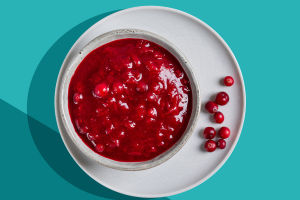Cassette tapes, once a dominant music format, have recently made a nostalgic comeback.
While they can't match the clarity of digital media, cassette tapes offer a unique listening experience defined by their analog warmth.
Several factors contribute to cassette tape sound quality:
1. Tape Formulation:
Cassettes come in different types, each affecting sound quality:
Ferric Type: Known for warm, slightly muted tones.
Chrome Type: Delivers clearer high frequencies and reduced noise.
Metal Type: Offers the best frequency response and dynamic range, though requires compatible decks.
2. Tape Speed:
Cassette tapes run at a standard speed of 1⅞ inches per second, slower than professional reel-to-reel tapes. This speed limits their ability to capture high frequencies, reducing overall fidelity.
3. Tape Thickness:
Narrow, thin tapes reduce the signal-to-noise ratio, contributing to background hiss. Thicker tapes improve sound quality by holding more magnetic material.
4. Equipment Quality:
A cassette deck’s quality greatly impacts sound. High-end decks feature precise tape transport systems and bias adjustment for optimal playback and recording quality.
Cassette tapes have several inherent limitations when compared to digital or vinyl formats:
1. Frequency Response:
Cassette tapes typically cover 30 Hz to 16 kHz, meaning they lose out on higher frequencies. This results in a slightly muted sound, especially in treble-heavy music.
2. Dynamic Range:
Cassettes have a limited dynamic range of around 50-60 dB, compared to over 90 dB for CDs. This means they can struggle with extremes in volume, causing some compression of louder or softer sounds.
3. Background Noise (Hiss):
Cassette tapes produce a faint hiss due to the magnetic particles on the tape. Although systems like Dolby B, C, and S help reduce noise, they cannot fully eliminate it.
4. Wow and Flutter:
Inconsistent tape speed can cause pitch variations, resulting in a wobbling effect called wow and flutter, which affects sustained musical notes.
Several advancements have enhanced cassette sound quality over the years:
1. Noise Reduction Systems:
Dolby noise reduction compresses and expands the high-frequency range during recording and playback to reduce tape hiss, improving clarity.
2. Advanced Tape Formulations:
Chrome and Metal tapes offer improved frequency response and dynamic range, making them more suitable for high-fidelity recordings.
3. High-End Decks:
Top-tier decks feature dual capstan drives and precision head alignment, minimizing wow and flutter while optimizing sound playback.
Despite their limitations, cassette tapes have a devoted following:
1. Analog Warmth:
Cassettes provide a unique analog warmth due to slight distortions and natural compression. Many listeners appreciate this characteristic sound, which contrasts with the clinical precision of digital formats.
2. Nostalgia and Tangibility:
For many, cassette tapes are more than just a medium—they are a nostalgic reminder of a bygone era. Handling tapes and physically interacting with music creates a personal connection that digital formats lack.
3. DIY Culture and Collectibility:
The ease of creating mixtapes and limited cassette releases keeps cassettes relevant among collectors and enthusiasts.
While cassette tapes may not match modern digital fidelity, their analog sound and nostalgic appeal continue to attract listeners.
Understanding the factors that influence their sound quality—along with their unique limitations—helps one appreciate the charm of this classic format.
In a world dominated by digital audio, cassettes offer a tactile, warm, and personal listening experience that refuses to fade away.


